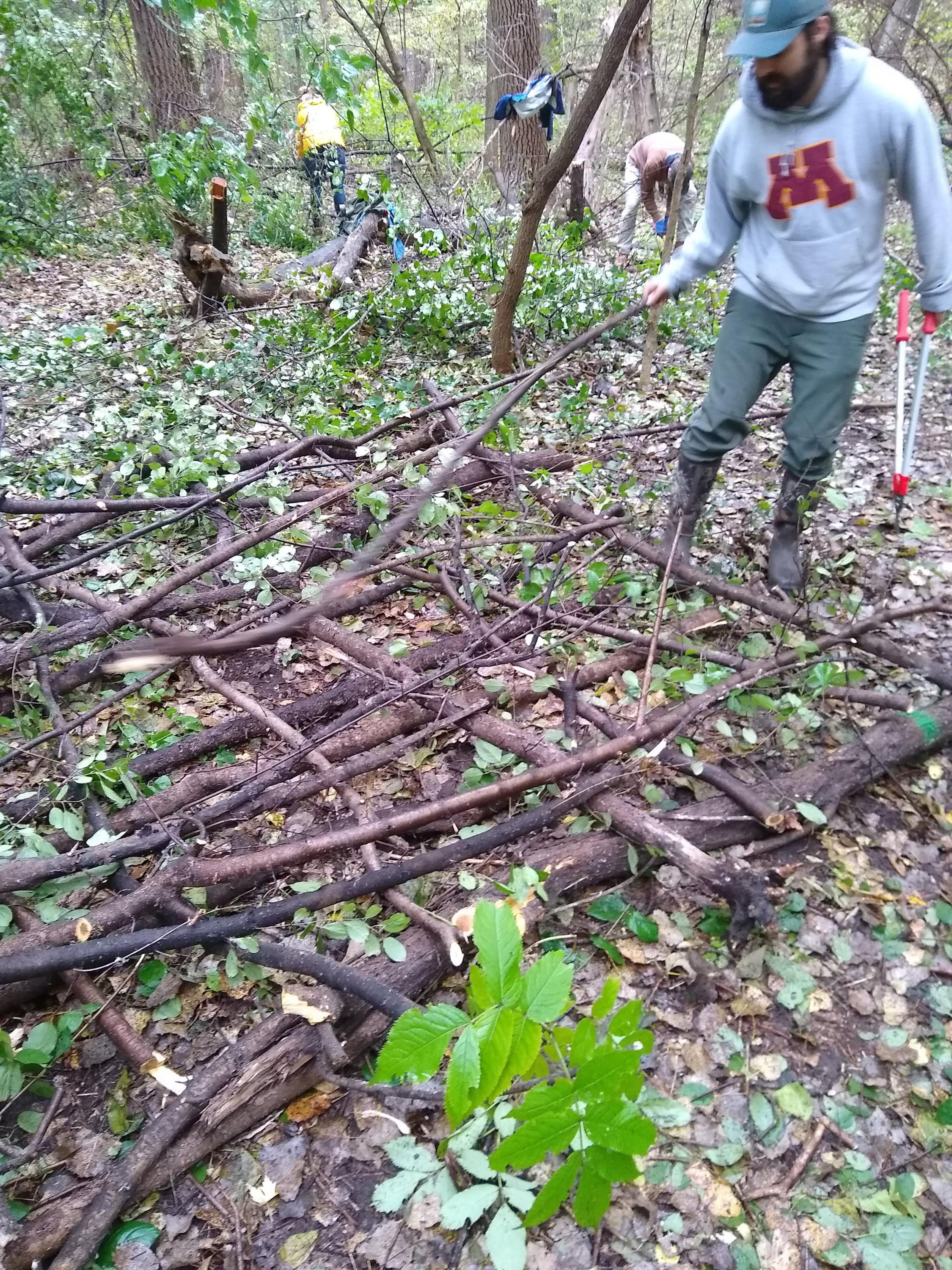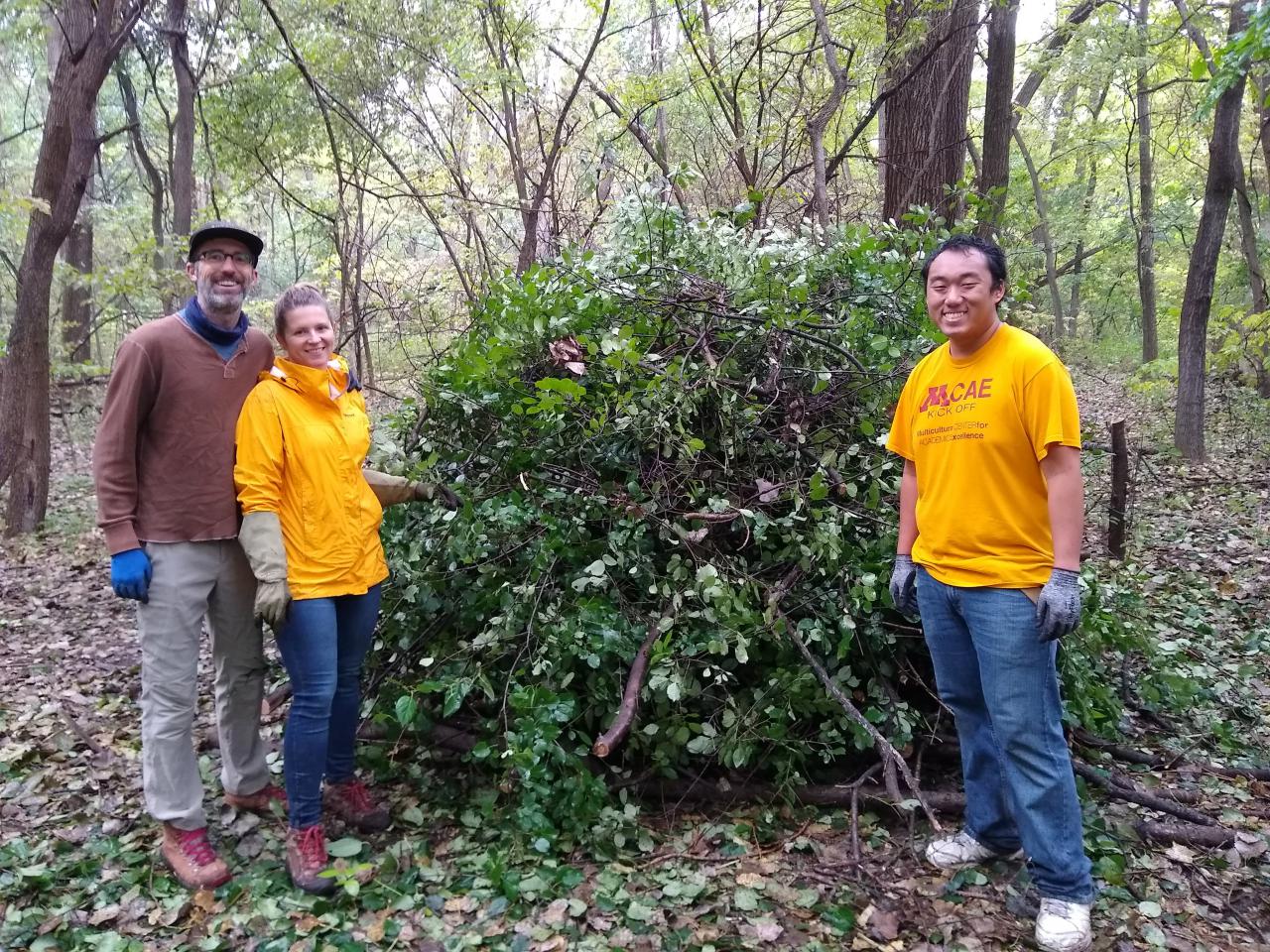Habitat piles: Readers' questions answered
Volunteers helped turn invasive buckthorn into habitat.
We received a number of emails in response to our earlier update on FMR's wildlife habitat pile event in the river gorge. Most people seem to be excited about the idea that removing invasive species could result in additional habitat creation. Others loved the idea and wanted more specific information about how to build those piles, perhaps in their own back yard.
While this kind of event was a new one for FMR volunteers, building habitat piles for wildlife isn't a new idea. Many organizations (including FMR) create piles to provide wildlife habitat in conservation areas or in places like forestry plantations, where human uses many otherwise diminish habitat value.
In our case, the habitat pile event was planned in large part to get around the difficulties of disposing of invasive plant material at an inaccessible site. Chipping, burning or hauling off-site are usually the preferred methods to dispose of cut buckthorn. Unfortunately, in hard-to-access areas, the first and last options are mostly off the table, and not all areas support burning brush piles. So as we've done with contractors on other projects, we decided to make habitat piles, this time with our River Gorge Stewards volunteers.
Piling it on for habitat
Constructing a habitat pile is a bit more deliberate than throwing branches into a mound, but it's an approachable task and our volunteers really enjoyed it.
In her recent blog update, FMR's Sophie Downey explained the gist of the approach:
"We carefully sorted our buckthorn branches by size, then began stacking them, largest to smallest: about ten branches in one direction, then ten in the other direction, building approximately 10-foot by 10-foot stacks. Once the piles stood about 4 feet tall, we covered them with the smallest leafy branches."

FMR Stewardship director Adam Flett places buckthorn neatly onto a pile to create the chambered structure needed to support various wildlife species.
It took a lot of sawing, lopping, and eyeballing to get approximate measurements, but everyone enjoyed it and it was worth the extra effort to create usable habitat for a wide variety of urban river wildlife.
For more resources and how-tos check out:
• Natural Resource Conservation Services' "Creating Brush Piles for Upland Habitat"
• Northwest Natural Resource Group's "Keeping Dead Wood and Creating Wildlife Habitat Piles"
Come enjoy and help restore the River Gorge
If you'd like to restore habitat at this special place and other nearby River Gorge Stewards locations, email our volunteer coordinator at volunteer@fmr.org.
